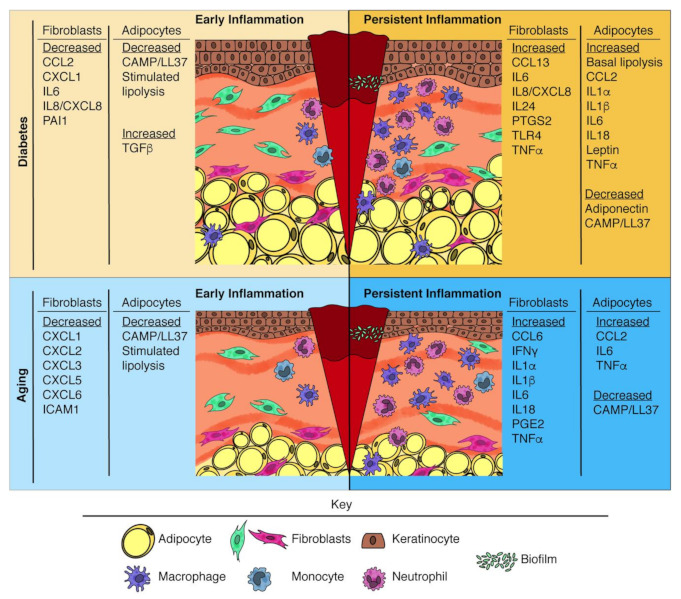Figure 2.

Changes in mesenchymal cell-derived immune regulators during impaired wound healing. Diagrams show representative changes to diabetic and aged skin. Diabetic skin undergoes expansion of the dermal white adipose tissue (DWAT) and a reduction in fibroblasts. Aged skin is thinner, with flatter keratinocytes, diminished DWAT, and fewer fibroblasts. Initially after injury, there is an impaired initial activation and recruitment of leukocytes to the site of injury. At later time points after injury, there is a persistence of inflammatory neutrophils and macrophages. Panels designate changes in pro- and anti-inflammatory factors from fibroblasts and adipocytes that can contribute to the altered leukocyte responses that occur with diabetes and age.
